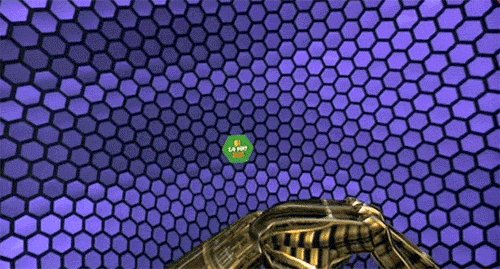I watched with interest Mark Zuckerberg’s speech this week in which he announced that Facebook was renaming its company “Meta” and that he plans to bring the “Metaverse” to Virtual Reality — specifically, Oculus (I mean, Meta Quest, their new name), a company which Facebook — I mean Meta — owns, and which Zuck is placing the future of his money and power.
His promise is to bring a 3D, Virtual Reality of the world to the masses. Most of the technology has existed for decades, but until now it hasn’t been easy or cheap enough for every person to use or afford.
I’ve been interested in 3D games, virtual reality and virtual worlds for 30 years. Each time it peaks in interest, the media declares that VR and 3D worlds are here to stay. But they never last. Could Zuckerberg change that? Possibly.
VIRTUAL REALITY:
I first became interested in VR around the time the movie “Lawnmower Man” came out in 1992. The movie, though it seems cheesy watching it now, had state-of-the-art computer effects the likes of which people had never seen. It was (mostly) fiction though, but it spoke to an interest people had in VR computer games. (Ironically, the characters in the movie had to be connected – with a wired headset – to a home VR computer in that movie. Even Hollywood couldn’t imagine a world with a wireless headset like Samsung and Oculus developed recently).

Some of the first arcade VR games appeared in malls around that time, and some toured — my first taste of VR in a headset was during one of these tours to my college). The game that I had chosen was a tank battle game, not unlike a similar game for DOS, called “Spectre VR” was launched in 1994 (after being available originally on Super Nintendo in 1991). It wasn’t actually VR and was a long way from what we have today, but when I played it in the dark on my brand new Gateway 2000 computer in my senior year of college, I was hooked and I dreamed of the world of “Lawnmower Man” becoming reality.

Flash forward to 2021, and Virtual Reality is still not mainstream, but it’s finally getting closer, making more progress in the last two years than in the last 30 years. Oculus has sold more than 10 million headsets and is crushing all other vendors. At $300 each, it’s still a high-end toy and is still being overlooked by kids in favor of high-end non-VR gaming systems. The $400 Playstation VR, introduced in 2016, requires an external camera and a wired headset (what is this, “Lawnmower Man?”) can now be purchased for $350 but hasn’t matured much and sales are slowing. Game developers are flocking to Oculus.
AUGMENTED REALITY (AR)
That’s VR; then there is AR (Augmented Reality). With Augmented Reality, you see additions to your world on a screen, or projected onto special glasses. This is the world of Pokemon Go, the first and just about only game to take advantage of AR. You see what’s around you like normal, but objects are added in. AR takes less processing power than VR, because it only has to create a small part of the reality, which makes the processing power required a fraction of VR, and the headsets (in theory) less cumbersome, allowing you to be present in your regular reality while, well, augmenting it. Niantic, the creator of Polemon Go, is fiercely determined that the future of the metaverse will be in AR, but he doesn’t have Zuck’s built-in audience of billions that has already given over their social data.
About 5 years ago, Microsoft Hololens headsets looked very promising for AR, but they never dropped from their price point of $3500, and essentially became a B2B (business to business) product, which is all fine and good for doctors and industrial engineers, but doesn’t help the average person.
Zuckerberg talks about upgrading their “Ray-Ban Stories” glasses with AR next year, but warns that it will be at a much higher price for a while. This is not done in a vacuum; SnapChat is also working on AR glasses. Right now, both Meta’s and Snap’s glasses are just reality reality. They mimic a Bluetooth headset, with voice control, and they can record video, but they don’t alter what you see. So yeah, now you have to charge your sunglasses too.
VIRTUAL WORLDS / THE METAVERSE
Virtual worlds (or “The Metaverse”) are simply gathering places for people — or more commonly, their avatars (computer-generated characters that may or may not look like them). The most significant virtual world is a game called “Second Life” which has been around for almost 20 years, and the idea for virtual worlds goes even further back. I joined Second Life in the mid-2000s and used it off and on during the next 10 years. It was nice, but took a hefty computer to render everything 3D in real-time; after 2010 3D gaming got much more realistic and we may be at the point where a Second-Life-like environment could be soon available in a headset. That’s probably what Zuck wants, but right now their Horizons app just released in VR is cute, but fairly fuzzy with a minimum of detail.
